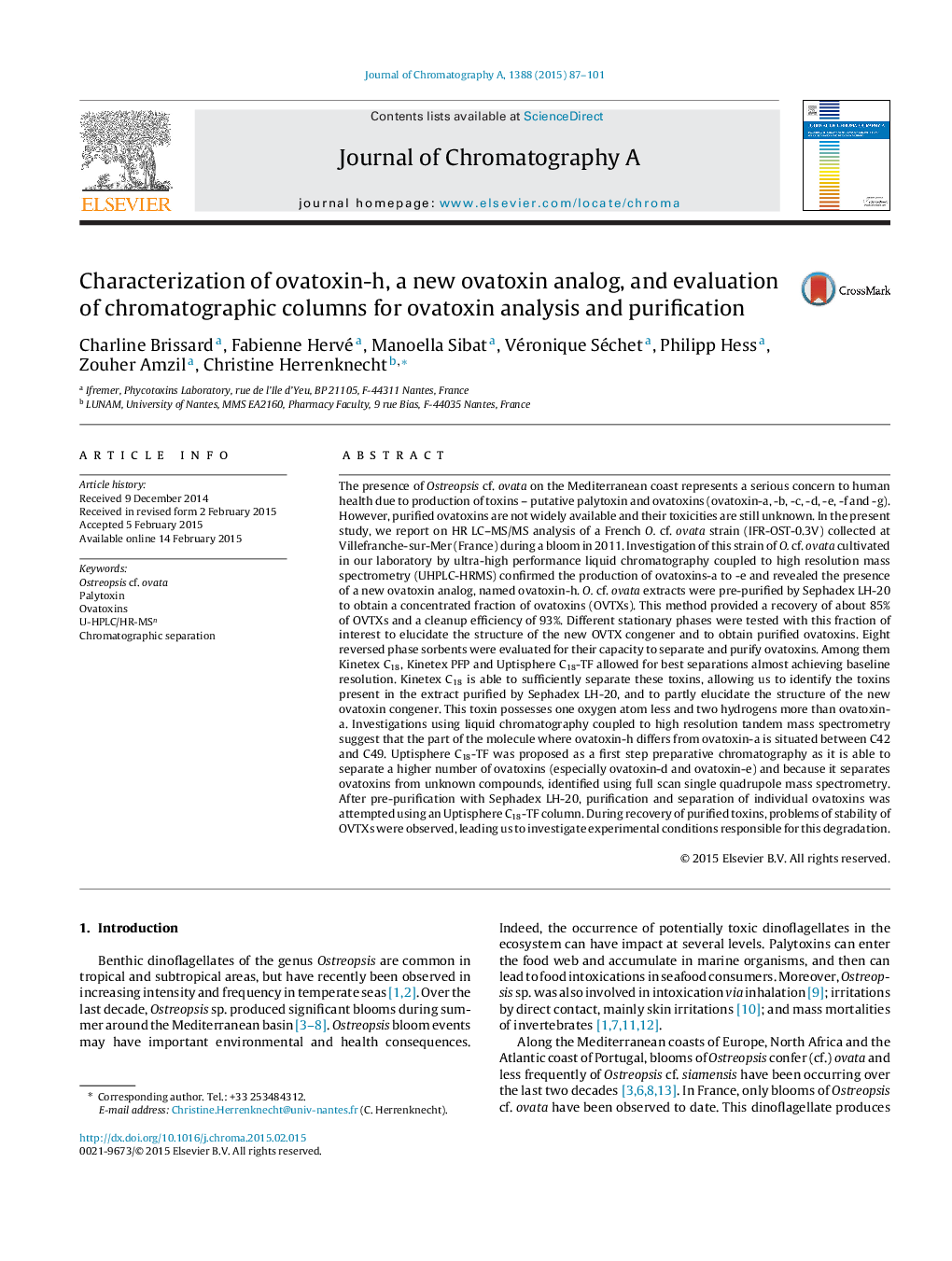| Article ID | Journal | Published Year | Pages | File Type |
|---|---|---|---|---|
| 1201894 | Journal of Chromatography A | 2015 | 15 Pages |
•A new analog of ovatoxin is described.•Uptisphere C18-TF is a suitable column to separate ovatoxins.•A protocol is proposed for the purification of ovatoxins.
The presence of Ostreopsis cf. ovata on the Mediterranean coast represents a serious concern to human health due to production of toxins – putative palytoxin and ovatoxins (ovatoxin-a, -b, -c, -d, -e, -f and -g). However, purified ovatoxins are not widely available and their toxicities are still unknown. In the present study, we report on HR LC–MS/MS analysis of a French O. cf. ovata strain (IFR-OST-0.3V) collected at Villefranche-sur-Mer (France) during a bloom in 2011. Investigation of this strain of O. cf. ovata cultivated in our laboratory by ultra-high performance liquid chromatography coupled to high resolution mass spectrometry (UHPLC-HRMS) confirmed the production of ovatoxins-a to -e and revealed the presence of a new ovatoxin analog, named ovatoxin-h. O. cf. ovata extracts were pre-purified by Sephadex LH-20 to obtain a concentrated fraction of ovatoxins (OVTXs). This method provided a recovery of about 85% of OVTXs and a cleanup efficiency of 93%. Different stationary phases were tested with this fraction of interest to elucidate the structure of the new OVTX congener and to obtain purified ovatoxins. Eight reversed phase sorbents were evaluated for their capacity to separate and purify ovatoxins. Among them Kinetex C18, Kinetex PFP and Uptisphere C18-TF allowed for best separations almost achieving baseline resolution. Kinetex C18 is able to sufficiently separate these toxins, allowing us to identify the toxins present in the extract purified by Sephadex LH-20, and to partly elucidate the structure of the new ovatoxin congener. This toxin possesses one oxygen atom less and two hydrogens more than ovatoxin-a. Investigations using liquid chromatography coupled to high resolution tandem mass spectrometry suggest that the part of the molecule where ovatoxin-h differs from ovatoxin-a is situated between C42 and C49. Uptisphere C18-TF was proposed as a first step preparative chromatography as it is able to separate a higher number of ovatoxins (especially ovatoxin-d and ovatoxin-e) and because it separates ovatoxins from unknown compounds, identified using full scan single quadrupole mass spectrometry. After pre-purification with Sephadex LH-20, purification and separation of individual ovatoxins was attempted using an Uptisphere C18-TF column. During recovery of purified toxins, problems of stability of OVTXs were observed, leading us to investigate experimental conditions responsible for this degradation.
